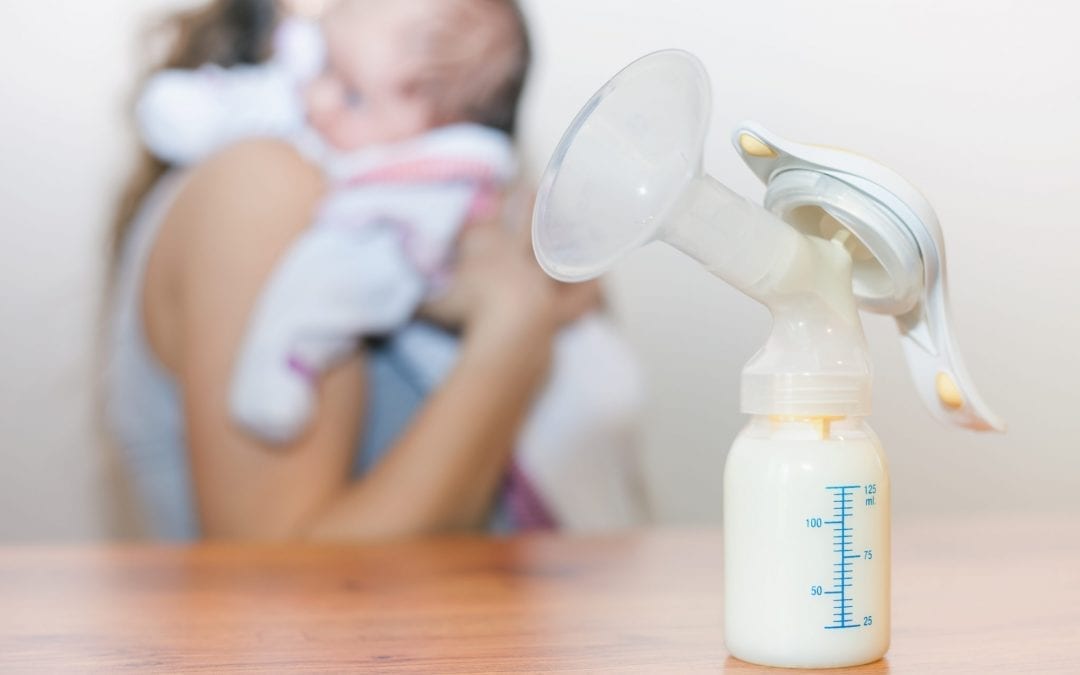Tips for Nursing with Inverted Nipples
In order for your new baby to nurse efficiently, he or she must be able to grasp your nipple as well as some of your areola and breast tissue in his or her mouth. Most women have nipples that protrude, making it easy for baby to suckle. Having flat or inverted nipples can make it more difficult for your baby to nurse effectively, which can reduce your milk supply. However, there’s no need to panic if your nipples don’t protrude. With the right care, you will still be able to nurse your baby.
Determining if You Have Flat or Inverted Nipples
Approximately one-third of first-time moms have some degree of nipple inversion. During pregnancy, your skin changes and becomes more elastic. This helps many women’s nipples to protrude by the time their baby makes his or her debut. Approximately 10 percent of women still have some degree of inversion at birth.
To see if you have inverted or flat nipples, gently grasp the breast tissue one inch behind your nipple and gently squeeze it between your thumb and forefinger. If your nipple protrudes, then your baby will be able to easily grasp it. If your nipple remains flat or inverts inside of your breast, you will need to take some steps to help your baby latch on properly.
Challenges to Nursing with Inverted Nipples
Because your baby will form a “teat” from your nipple, areola and breast tissue, many women with inverted or flat nipples can still nurse efficiently with little assistance. The problem comes when women have breasts with very little elasticity. If the baby can’t draw enough of the breast into his or her mouth, they won’t be able to latch on and suck properly. This will cause them to become frustrated, refuse to latch on or fall asleep quickly, which will decrease your milk supply. Babies who are premature or who have a low birth weight may have an especially difficult time latching onto an inverted or flat nipple.
Tips for Nursing with Inverted Nipples
The good news is that your nipple shape doesn’t affect your body’s ability to produce or dispense your breastmilk. There are a variety of tools and techniques available to help your nipples to protrude and help your baby to latch onto your breast properly.
Nipple Shields
Nipple shields are soft, flexible devices that are worn over the breast during breastfeeding. They help to extend the length of the nipple, which will help stimulate your baby’s palate and increase their urge to suck.
Breast Shells
Breast shells are made of a more rigid plastic and are designed to be worn under the bra in-between feedings. The shell applies pressure to the nipple, helping to draw it out. They can be worn during the last few months of pregnancy to prepare your nipples for nursing; however, it’s undetermined if this is helpful.
The Hoffman Technique
Some women have adhesions at the base of their nipples that keep them inverted. Using the Hoffman technique may help you break up these adhesions. To do the technique, place the thumbs of both of your hands at the base of one nipple. Gently, but firmly, pull your thumbs away from each other. Repeat on the other breast. Begin by doing this technique twice a day and work up to doing it five times a day. This technique is safe to do during the last few months of pregnancy.
Pumping
Because some babies have a difficult time latching onto an inverted nipple, pumping with a hospital-grade breast pump while wearing a nipple shield can help. Pumping can both help you maintain your milk supply while your baby learns to latch properly and help draw out your nipple by breaking up any adhesions that are keeping it inverted. Hospital grade pumps are best because they offer the best suction. Many insurance companies cover breast pumps at no cost to you. By filling out Ameda Direct’s simple online form, you can find out if you’re eligible for a free insurance-provided breast pump. We’ll handle all the paperwork so you can focus on the things that matter most.
Inverted or flat nipples do present a unique challenge to nursing, but it is one that can be overcome. With the right tools, your baby will soon be able to latch properly and you can enjoy the special bond that comes with nursing.


